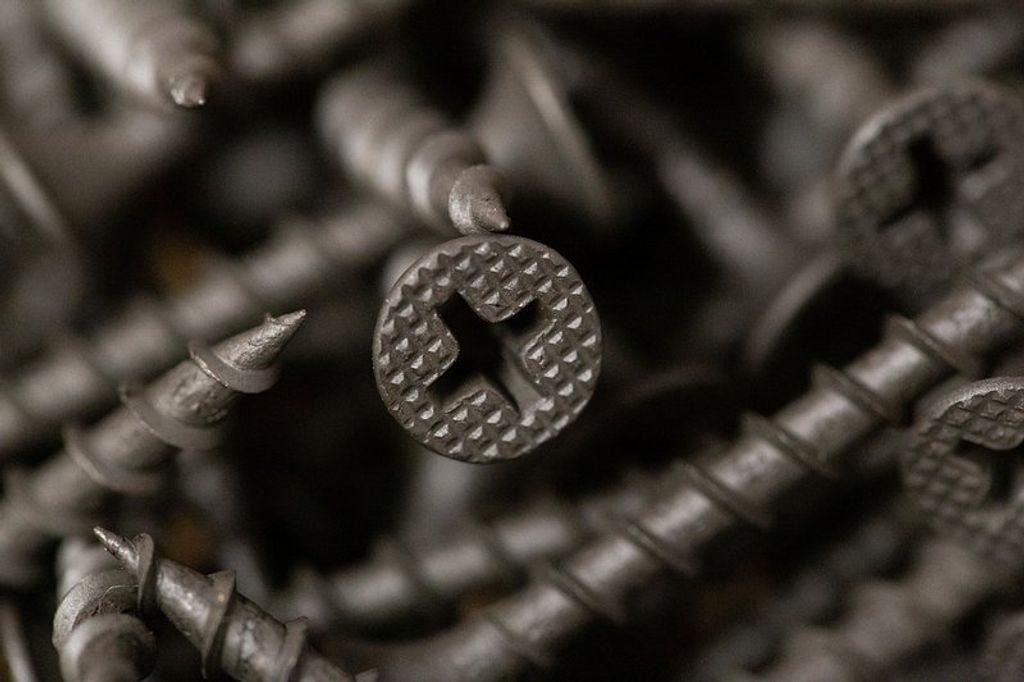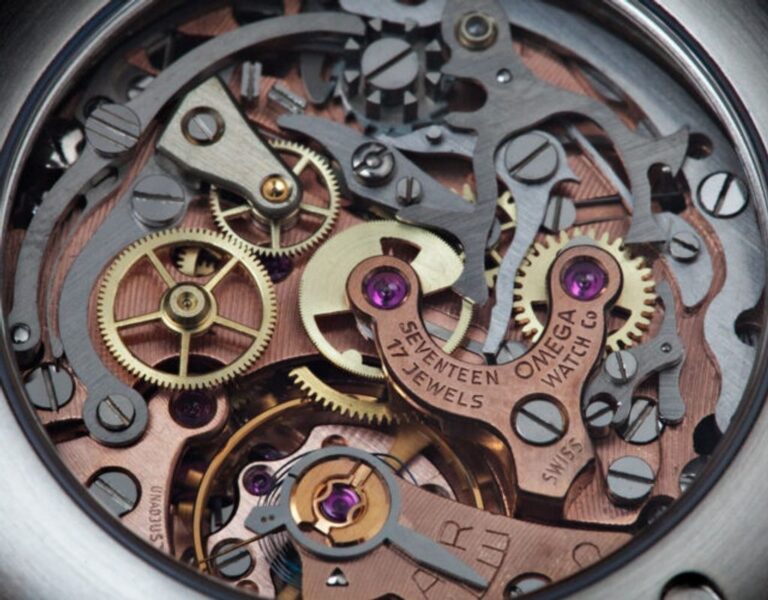“Nails vs. Screws: The Great Debate in Framing”
The debate between nails and screws has been a longstanding topic in the construction industry, with strong arguments on both sides. This article explores the fundamental differences between nails and screws, delves into historical perspectives, examines technical considerations, and provides practical insights for choosing the right fastener. It also discusses the impact of tools, economic implications, expert opinions, and looks ahead to the future of framing fasteners.
Key Takeaways
- Understanding the specific load-bearing capacities of nails and screws is crucial for ensuring structural integrity in framing projects.
- Efficiency and speed of installation play a significant role in determining whether nails or screws are the preferred fastener for a particular application.
- Environmental factors, such as exposure to moisture and temperature fluctuations, can greatly affect the performance and longevity of nails and screws in framing applications.
- The choice between nails and screws is often influenced by building codes and regulations, as well as the specific requirements of the project.
- Innovations in fastening technology and sustainability in fastener manufacturing are shaping the future of framing fasteners, offering potential solutions to the nails vs. screws debate.
Understanding the Basics: Nails and Screws Explained

The Anatomy of a Nail
The humble nail is a staple in construction and framing, with a design that has remained largely unchanged for centuries. A typical nail consists of a shank, which is the long, slender part that penetrates the material, and a head, which provides a surface to strike and prevents the nail from sinking too deeply into the wood.
Nails come in various lengths and diameters, commonly referred to as gauge. The gauge of a nail is important as it determines the nail’s holding power and is selected based on the thickness of the materials being fastened. Here’s a quick overview of common nail sizes:
- Finish nails: Small head, used for trim work
- Common nails: Large head, used for framing
- Box nails: Thinner than common nails, reduced splitting
Tip: When selecting nails for a project, consider the wood type and thickness to ensure adequate holding power without causing damage.
The Anatomy of a Screw
A screw is a ubiquitous and versatile fastener with a unique anatomy tailored for holding materials together with precision and strength. The head of a screw is the top part that is turned to drive the screw into the material. It comes in various shapes, such as flat, round, or hexagonal, each serving a specific purpose or fitting a particular tool.
The shaft of the screw, also known as the body, extends from the underside of the head to the tip. It is the length of the screw and is responsible for aligning the screw as it enters the material. The thread is the helical structure that wraps around the shaft, converting rotational force into linear movement and providing the grip that holds materials together.
Tip: When selecting a screw for a project, consider the type of head and thread pattern as they will determine the tool required for installation and the fastener’s holding power.
Screws also come with different types of drives – the part of the head that engages with the tool. Common drives include Phillips, flathead, and Torx, each offering different levels of grip and torque transmission.
Material Composition and Varieties
The choice of materials for nails and screws is critical, as it directly influences their strength, durability, and suitability for specific applications. Nails are commonly made from steel, but can also be found in stainless steel, aluminum, and copper varieties, each offering unique benefits. Stainless steel nails resist corrosion, making them ideal for outdoor use, while aluminum nails are lighter and copper nails are often used for their aesthetic appeal.
Screws, on the other hand, come in a vast array of materials and coatings. The most prevalent are carbon steel and stainless steel, but specialty screws may be made from brass, bronze, or even plastic for specific applications. Coatings such as zinc, ceramic, and black oxide not only add to the visual appeal but also enhance the screw’s resistance to corrosion and wear.
Selecting the appropriate material and variety is essential, as it can affect the fastener’s performance over time. For example, in coastal areas, the saline environment necessitates the use of corrosion-resistant fasteners to prevent weakening of the frame structure.
Historical Perspectives on Framing Fasteners

The Evolution of Nails in Construction
The history of nails in construction is a testament to human ingenuity. From the early use of wrought iron nails, which were individually hand-forged by blacksmiths, to the introduction of cut nails in the 18th century, the evolution of nails has been closely tied to advancements in technology and manufacturing processes. The mass production of wire nails in the late 19th century marked a significant turning point, making nails more uniform and widely available.
In the early days, the production of nails was labor-intensive and costly, which made them a valuable commodity. It was not uncommon for people to burn down old buildings just to recover the nails. As technology progressed, so did the efficiency of nail production, leading to lower costs and greater accessibility. This shift had a profound impact on construction, enabling the rapid expansion of cities and the development of new architectural styles.
Tip: When restoring or examining older buildings, the type of nails used can provide valuable clues about the structure’s age and the construction methods of the time.
The Introduction of Screws into Framing
The advent of screws in framing marked a significant turning point in construction techniques. Unlike nails, which rely on friction to hold components together, screws offer a unique combination of torsional strength and clamping force, making them ideal for certain applications. Their helical threads engage with the material to provide enhanced resistance to pull-out and vibration, a critical advantage in dynamic structures.
Historically, screws were not as widely used as nails due to the labor-intensive process of manufacturing and driving them into materials. However, with the invention of the screw-cutting lathe in the 18th century, screws became more accessible and their use in framing began to rise. This was further propelled by the development of power-driven tools, which made the installation of screws much faster and more efficient.
When considering the use of screws in framing, it’s important to note the following:
- Screws are typically used in areas requiring stronger connections.
- They allow for easier disassembly and adjustments.
- The variety of screw heads and threads cater to different framing needs.
Tip: Always pre-drill holes for screws to prevent wood from splitting and to ensure a secure fit.
Technical Considerations in Choosing Fasteners

Load-Bearing Capacities
When it comes to framing, the load-bearing capacity of a fastener is a critical factor that determines its suitability for a particular application. Nails and screws differ significantly in how they handle loads, which is essential for ensuring the structural integrity of a building.
-
Nails are preferred for their ability to flex under stress, making them ideal for applications where the load may shift or where the structure is exposed to high winds or seismic activity. Their shear strength is a key attribute in these scenarios.
-
Screws, on the other hand, have excellent tensile strength, which makes them better suited for applications that require strong vertical hold, such as cabinetry or heavy shelving. However, they are less forgiving than nails when subjected to lateral forces.
Tip: Always consider the specific load requirements of your project when selecting a fastener. The choice between a nail and a screw could make a significant difference in the longevity and safety of the structure.
Shear and Tensile Strength
When selecting fasteners for framing, understanding the shear and tensile strength of nails and screws is crucial. Shear strength refers to the ability of a fastener to resist forces that might cause it to slide or be cut by the material it’s holding together. Tensile strength, on the other hand, measures the resistance to forces that attempt to pull the fastener straight out from the material.
Shear strength is particularly important in framing applications where lateral loads are common, such as in earthquake-prone areas or in structures subject to high winds. Tensile strength is a key consideration in vertical load-bearing applications, where the weight of the structure is a constant force.
Tip: Always consider both the shear and tensile strength when choosing fasteners for a specific framing project to ensure structural integrity.
Here’s a simplified comparison of typical shear and tensile strengths for common nail and screw types:
- Common wire nail: Moderate shear strength, low tensile strength
- Ring shank nail: High shear strength, moderate tensile strength
- Wood screw: Moderate shear strength, high tensile strength
- Structural screw: High shear strength, high tensile strength
These values can vary based on the material composition and size of the fastener. It’s essential to consult manufacturer specifications or engineering data when precise values are required for a project.
Environmental Factors Affecting Performance
The performance of framing fasteners is not only determined by their physical properties but also by the environment in which they are used. Humidity and temperature are two critical factors that can significantly affect the integrity of both nails and screws. High humidity levels can lead to corrosion, especially in metal fasteners not treated for moisture resistance. Similarly, extreme temperatures can cause materials to expand or contract, potentially compromising the fastener’s hold.
- Corrosion Resistance: Fasteners must be chosen based on their ability to resist corrosion in the specific environmental conditions they will face.
- Thermal Expansion: Materials react differently to temperature changes, and this must be accounted for, especially in outdoor applications.
Always consider the local climate and exposure to the elements when selecting fasteners for a project to ensure longevity and safety.
Practical Insights: When to Use Nails or Screws

The Role of Building Codes
Building codes play a pivotal role in determining whether nails or screws should be used in framing projects. These codes are a set of regulations that dictate the minimum standards for construction to ensure safety, health, and general welfare. They are particularly important when it comes to the structural integrity of a building.
Compliance with local building codes is not just a recommendation; it is a legal requirement. Builders and contractors must adhere to these codes, which can vary significantly from one region to another. For example, areas prone to earthquakes or high winds might have stricter codes regarding the use of fasteners in framing.
Building codes often specify:
- The type of fastener required for different framing applications
- The size and spacing of fasteners
- Load-bearing requirements
- Materials suitable for various environmental conditions
Tip: Always consult the latest building codes before starting a framing project to avoid costly mistakes and ensure compliance.
Understanding and following building codes can greatly influence the decision to use nails or screws in framing. While nails are traditionally favored for their speed and ease of use, screws provide superior holding power, which may be required by code in certain situations.
Efficiency and Speed of Installation
In the realm of framing, the choice between using nails and screws is often influenced by the efficiency and speed of installation. Nails are typically favored for their rapid deployment, which is crucial in large-scale construction projects. A pneumatic nail gun can drive nails quickly and consistently, significantly reducing the time required for framing.
On the other hand, screws provide a more secure and precise connection but at the cost of increased installation time. The use of a screw gun is necessary for driving screws, which is a more time-consuming process due to the need for aligning the screw and driving it into the material without stripping the head.
Tip: To maximize efficiency, consider the use of collated screws, which can be used with an auto-feed screw gun, bridging the gap between the speed of nails and the holding power of screws.
While both fasteners have their place in construction, the choice often comes down to the specific requirements of the project and the trade-offs between time savings and structural integrity.
Longevity and Maintenance Concerns
The debate between using nails and screws for framing often hinges on the expected longevity and maintenance requirements of the structure. Nails, being more flexible under stress, tend to maintain their hold even as buildings expand and contract with temperature changes. Screws, on the other hand, offer superior resistance to withdrawal, making them ideal for applications where longevity is paramount.
- Maintenance concerns* also play a critical role in the decision-making process. While nails can be easier to install, they may require more frequent inspections and potential replacements due to corrosion or loosening over time. Screws are less likely to loosen, but they can be more susceptible to corrosion, especially in outdoor or humid environments. Regular maintenance checks are essential to ensure the integrity of the fastened structure.
Tip: Always consider the specific environmental conditions and the expected lifespan of the structure when choosing between nails and screws for framing.
When it comes to longevity and maintenance, the choice between nails and screws may also be influenced by the material being used for framing. Here’s a quick comparison:
- Nails are typically preferred for wood framing due to their ability to flex slightly, which accommodates the natural movement of wood over time.
- Screws are often chosen for metal framing or composite materials, where their holding power and resistance to loosening are critical.
The Impact of Tools on Fastener Effectiveness

Hammer vs. Screw Gun: A Comparative Analysis
When it comes to framing, the choice between using a hammer and a screw gun is not just about preference but also about efficiency and the nature of the task at hand. A hammer, being a traditional tool, is known for its simplicity and reliability. It requires no power source and is generally more affordable, making it accessible for basic tasks and small projects.
On the other hand, a screw gun offers a significant advantage in speed and precision, especially when dealing with large-scale constructions or repetitive tasks. The use of a screw gun can greatly reduce the time spent on installation, which is a critical factor in project timelines. However, it’s important to consider the initial investment and the need for a power source, whether it’s a battery or an electrical outlet.
Tip: Always assess the scope of your project and the materials involved to determine the most suitable tool for the job.
The following table provides a quick comparison of key aspects between hammers and screw guns:
| Feature | Hammer | Screw Gun |
|---|---|---|
| Initial Cost | Lower | Higher |
| Speed of Installation | Slower | Faster |
| Power Source | Not Required | Required |
| Precision | Moderate | High |
| Suitability for Large Projects | Less Suitable | More Suitable |
While hammers are more suited for jobs that require a delicate touch or where precision is less critical, screw guns excel in environments where time is of the essence and consistency is key. Ultimately, the choice between these tools should be guided by the specific requirements of the project and the preferences of the user.
Advancements in Fastening Technology
In the fast-paced world of fastening technology, innovations and advancements continue to drive the industry forward. The integration of smart materials and precision engineering has led to remarkable improvements in fastener performance and reliability. These developments have resulted in enhanced durability and increased efficiency in various applications. Additionally, the use of advanced coatings and surface treatments has significantly extended the lifespan of fasteners, contributing to sustainable and cost-effective solutions. As the industry evolves, the focus on quality and longevity remains paramount, shaping the future of fastening technology.
Economic Implications in the Nails vs. Screws Debate

Cost-Benefit Analysis of Nails and Screws
When considering the economics of framing fasteners, a cost-benefit analysis is crucial. Nails are generally less expensive than screws and can be driven more quickly, which may lead to cost savings in labor. However, screws offer superior holding power and can be more cost-effective in the long run due to their durability and ease of removal.
Initial costs for nails and screws can be deceptive. While nails have a lower upfront cost, the potential for future maintenance or failure must be factored into the overall expense. Screws, on the other hand, may have a higher initial cost but can result in fewer long-term issues.
Tip: Always consider the full lifecycle cost of fasteners, including installation, maintenance, and potential replacement costs, to make the most economically sound decision.
The table below provides a simplified comparison of the cost factors associated with nails and screws:
| Fastener Type | Initial Cost | Long-Term Value |
|---|---|---|
| Nails | Low | Moderate |
| Screws | High | High |
Ultimately, the choice between nails and screws should be based on a comprehensive understanding of the project requirements and the long-term implications of each fastener type.
The Influence of Bulk Purchasing
The economic landscape of framing fasteners is significantly shaped by the practice of bulk purchasing. Buying nails and screws in large quantities often leads to a cost-effective solution for construction projects. Bulk purchases can reduce the unit price of each fastener, translating into substantial savings over the course of a project.
Contractors and builders may prefer bulk buying for several reasons:
- Economies of scale: The more you buy, the less you pay per unit.
- Consistent quality: Large orders from a single batch ensure uniformity.
- Inventory management: Having a large supply on hand reduces the risk of project delays.
- Negotiating power: Larger orders can give buyers leverage to negotiate better prices.
Remember: While bulk purchasing can be economical, it’s important to balance the initial cost with the project’s specific needs to avoid overstocking.
In the context of framing, where thousands of fasteners can be used in a single structure, the impact of bulk purchasing on the overall budget can be quite significant. However, it’s crucial to consider the storage and potential waste of unused materials when ordering in bulk.
Expert Opinions and Industry Preferences

Survey Results from Professional Framers
In the quest to understand industry preferences, a survey was conducted among professional framers to gauge their choice between nails and screws for various framing applications. The results were telling, with a clear division based on specific criteria such as the type of framing project, the expected longevity, and the ease of installation.
The majority of respondents favored nails for standard residential framing, citing faster installation times and sufficient strength for typical loads. On the other hand, screws were preferred for projects requiring higher precision and the ability to withstand greater shear forces. Notably, the use of screws was predominant in areas prone to seismic activity, where the additional grip strength provides an extra layer of security.
Efficiency and cost were also significant factors influencing the choice. Nails are generally less expensive and can be installed more quickly, which is crucial in large-scale construction projects. However, the long-term benefits of screws, such as ease of disassembly and minimal wood splitting, were highlighted as reasons to opt for the slightly more costly option in certain scenarios.
Tip: Always consider the specific requirements of your framing project when choosing between nails and screws. Factors such as load type, environmental conditions, and the need for future adjustments should guide your decision.
Case Studies: Successes and Failures
In the realm of framing fasteners, expert opinions and industry preferences play a crucial role in shaping best practices and decision-making processes. Understanding the experiences and insights of professional framers provides valuable guidance for navigating the complexities of fastener selection and application. These perspectives offer a wealth of knowledge that can inform strategic choices and enhance the overall quality of framing projects. It is essential to recognize the significance of expert opinions and industry preferences as influential factors in the nails vs. screws debate.
Looking Ahead: The Future of Framing Fasteners

Innovations on the Horizon
As the construction industry continues to evolve, innovative materials and advanced joining methods are shaping the future of framing fasteners. Lightweight composite materials are enabling lighter and more durable structures, while advanced joining methods enhance efficiency and durability. These advancements are driving the development of fasteners that meet the demands of modern construction practices. The integration of sustainable design principles is also becoming a key focus, ensuring that fastener manufacturing aligns with environmental goals and regulations. The future of framing fasteners is marked by a commitment to innovation and sustainability.
Sustainability in Fastener Manufacturing
As the construction industry moves towards more sustainable practices, the manufacturing of fasteners is also undergoing a transformation. The focus is now on reducing the environmental footprint of these essential components. Eco-friendly materials and processes are being developed to ensure that the fasteners not only meet the structural requirements but also contribute to a greener building environment.
In the quest for sustainability, manufacturers are exploring various avenues:
- Utilizing recycled materials to reduce waste
- Implementing energy-efficient production methods
- Innovating in the design to minimize material usage without compromising strength
- Adopting practices that reduce emissions and water usage
Tip: When selecting fasteners, consider the long-term environmental impact alongside the immediate construction needs.
The industry’s commitment to sustainability is not just about adhering to regulations; it’s about taking proactive steps to ensure that the fasteners of tomorrow are better for the planet. This approach not only benefits the environment but can also lead to cost savings and improved product performance in the long run.
Looking ahead, the future of framing fasteners is filled with innovation and exciting advancements. As the industry continues to evolve, new technologies and materials are shaping the way we think about fastening solutions. At NAILinspire.com, we’re dedicated to staying ahead of the curve and bringing you the latest updates on framing fasteners and nail art design. Explore our ultimate online nail art design library and discover the possibilities that await.
Frequently Asked Questions
What are the main differences between nails and screws?
Nails are typically used for fastening wood and have a smooth shank, while screws have threads that provide better grip and holding power.
When should I use nails instead of screws?
Nails are suitable for temporary or non-load-bearing applications, such as hanging pictures or attaching trim.
In what scenarios are screws a better choice than nails?
Screws are preferred for structural framing, decking, and other load-bearing applications due to their superior holding strength and resistance to withdrawal.
Do nails or screws require pre-drilling?
Nails do not require pre-drilling, while screws may need pre-drilling in hardwoods or when close to the edge of the material to prevent splitting.
What factors should I consider when deciding between nails and screws?
Consider the material being fastened, load-bearing requirements, environmental conditions, and the desired longevity of the connection.
Can nails be used with a screw gun and vice versa?
Nails should be driven with a hammer or nail gun, while screws are used with a screw gun or drill driver. Using the wrong tool can lead to improper installation and reduced effectiveness.







